Does IoT solutions influence the lives of average citizens? Well…
Every morning you shower with water from a roof tank or a large reservoir within your apartment complex.
When you come to the filling station, there’s a large tank where they store the fuel for vehicles.
When you pass a construction site, you see high cranes carrying tons of concrete structures to build someone’s dream house.
Going grocery shopping in the evening, you may notice big and small fridges where they store frozen or FMCG goods.
At the end of the month, you get an electricity bill.
If something goes wrong with the assets, it will affect the business owners and citizens.
- In the former case, a business stops providing services and loses money or customer trust.
- In the latter case, you won’t be able to do routine stuff – take a shower, fuel a car, eat quality goods for dinner – and pay the extra money for energy consumption.
That’s why business owners should continuously monitor their assets:
- There should be enough water and fuel in the tanks at all times.
- Fridges at homes, supermarkets, warehouses, and truck reefers shouldn’t switch off.
- Construction machinery should keep working safely and cost-efficiently.
The good news is that the modern world learned to do this remotely through sensors and counters. The bad news is that it even sounds so complicated that most people don’t go for it.
The problem of IoT complexity

Of note, it’s not a problem for all. The bigger the company is, the less they bother about the implementation, paying a fortune for turnkey solutions and managed services. In other words, making IoT work efficiently is not their problem. For them, it just works. Plus, for many companies, IoT is just another trend to follow and an image-building tool, so cost-saving is not their focus.
Small-to-medium business is a different story. If the owner of a trucking company, store, warehouse, filling station, or any other service provider opts for IoT, he expects a return on investments as fast as possible. To make this happen, they go through several steps.
- Study the IoT hardware market and select the most cost-efficient sensors it has to offer.
- Study the IoT software market and choose the app to suit your needs.
- Check if the selected devices work with the chosen hardware. If not, repeat steps 1 & 2.
- Learn to install and connect the devices to the IoT platform.
- Configure the software and teach employees to use it.
Few keep thinking about IoT if they fail at steps 1 & 2. And these few lose faith after numerous attempts to make it all work together.
Making IoT simple
The new initiative by KLOUDIP solves the problem of IoT complexity in the most common cases. For the past 15 years, the company has been implementing telematics and IoT solutions for businesses. This year, KLOUDIP accumulated its experience to offer eight ready-to-use IoT solutions:
- Temperature monitoring
- Energy management
- Stationary fuel & water tank monitoring
- Vehicle fuel consumption control
- Machine hour tracking
- Essential fleet management
- Patrol guard control
Ready-to-use means three things.
1. Devices selected for the particular task
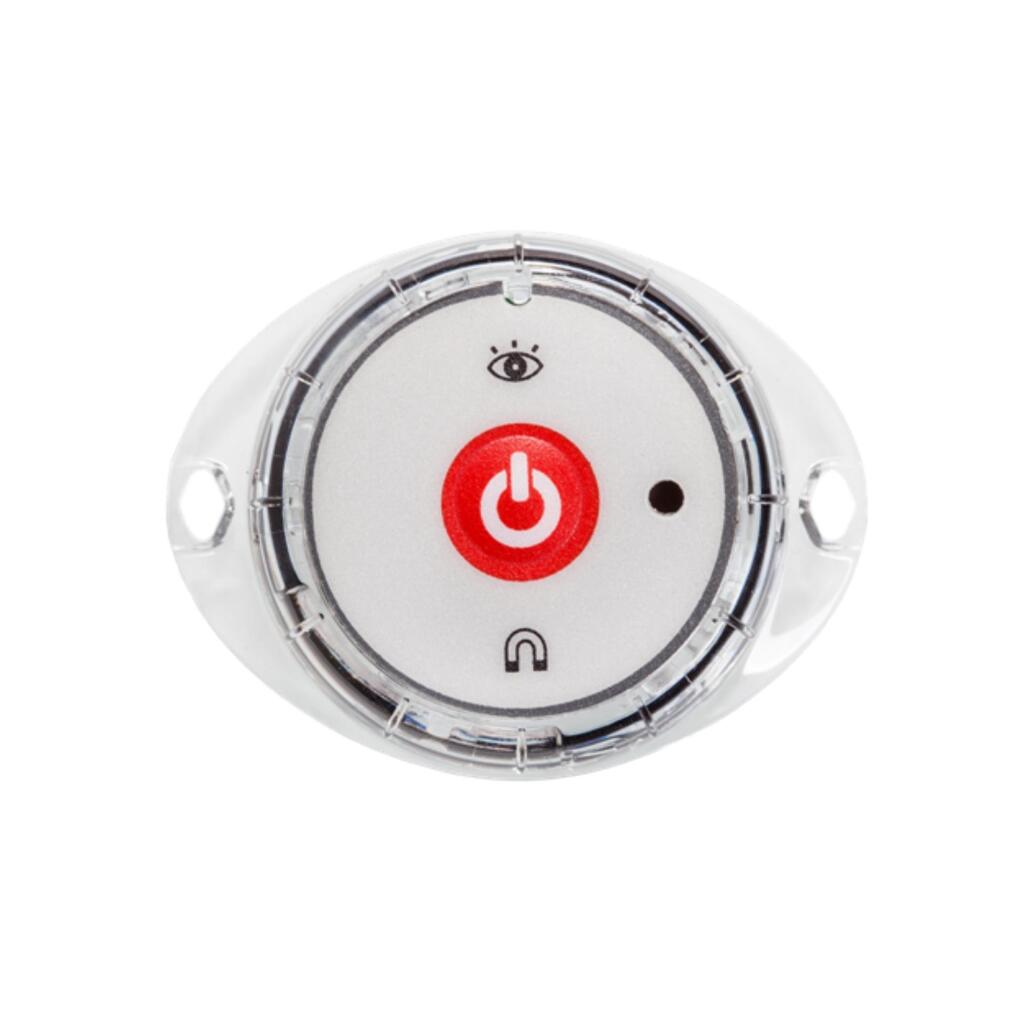
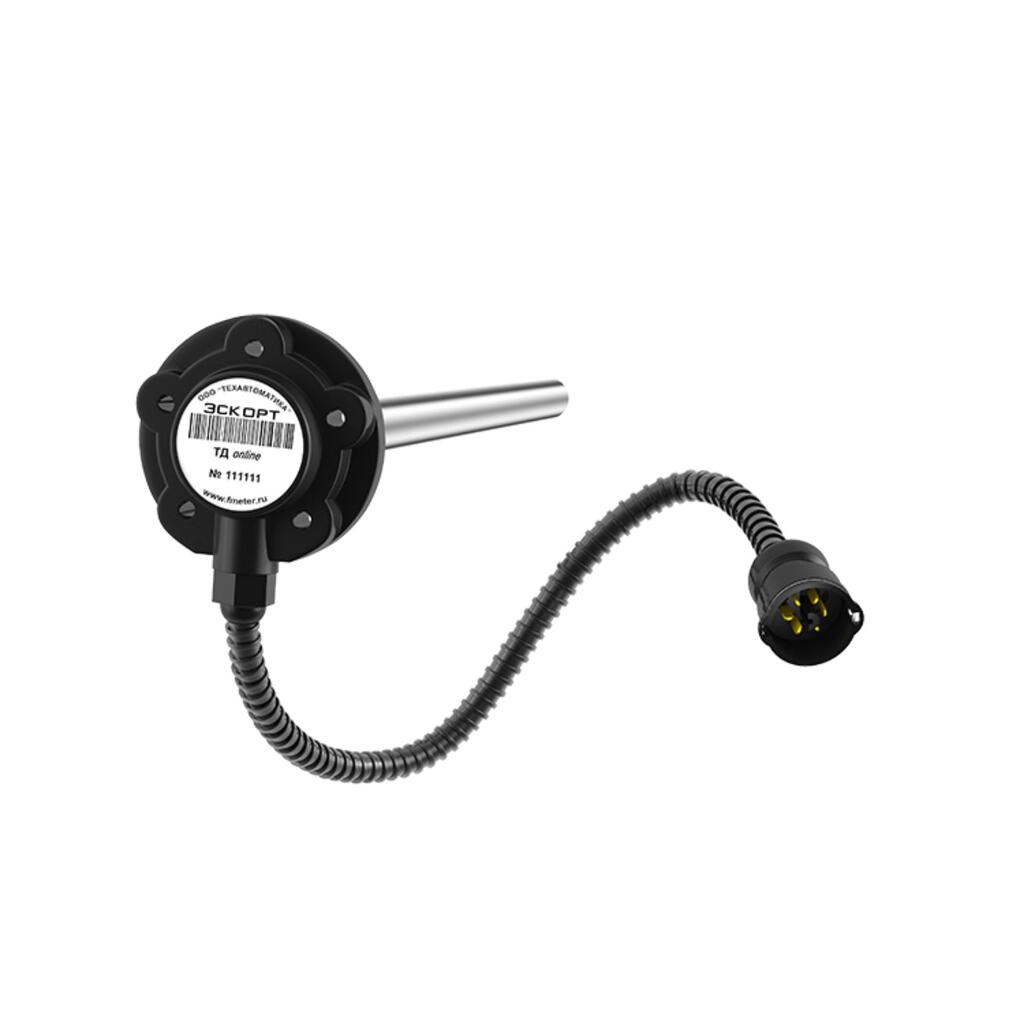
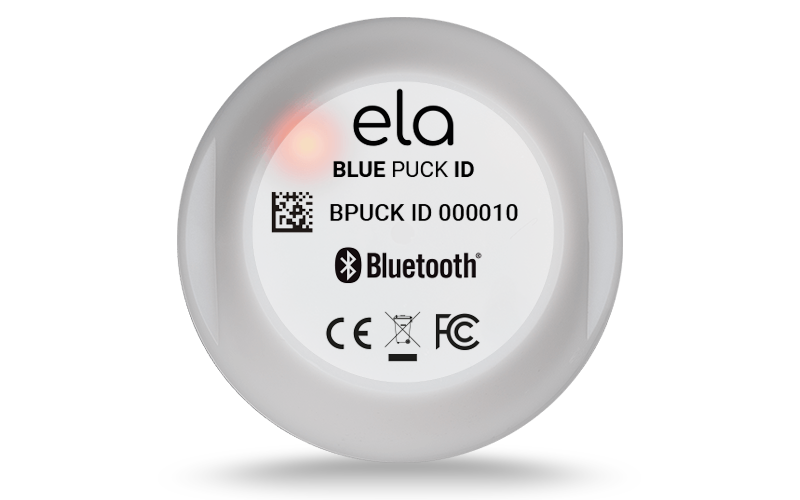
Sensors, counters, and IoT gateways are pre-configured to work with the IoT platform. Moreover, KLOUDIP continuously remains in touch with the leading IoT hardware manufacturers globally, so if a better option appears on the market, users will get it among the first.
2. IoT software pre-configured for the task
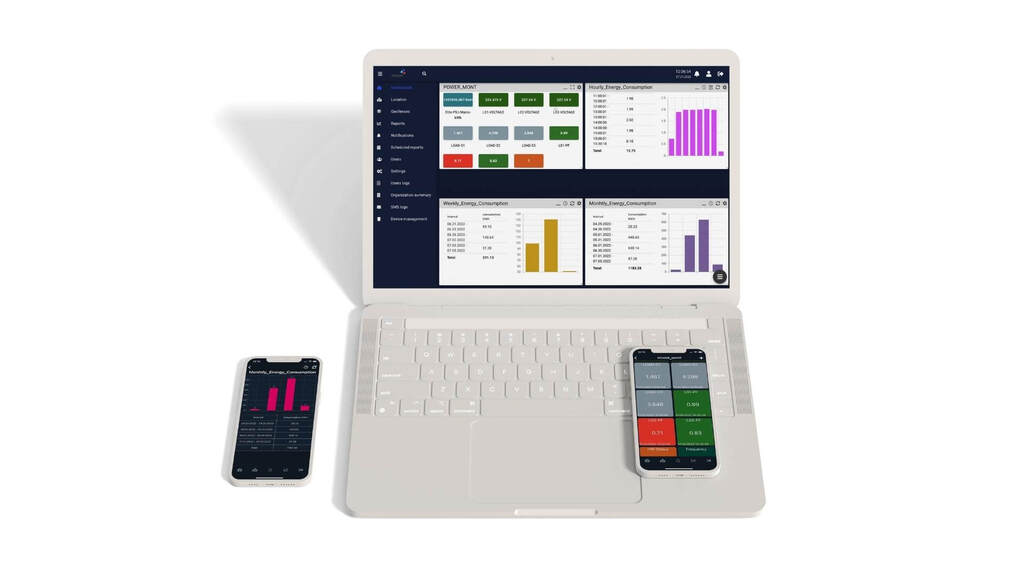
HAZER IoT platform offers IoT dashboards to monitor sensors in real time and reports to analyze sensor readings retrospectively. By saying that we pre-set it for the task, we mean:
- A conceivable monitoring dashboard with colored widgets each corresponding to a particular sensor. If anything happens (e.g., temperature rises) the widgets will change colors, attracting the user’s attention.
- Alerts and notifications for user-defined events.
- Pre-ser reports that a user generates with a click.
A user doesn’t need to configure anything on his own.
3. Installation and support
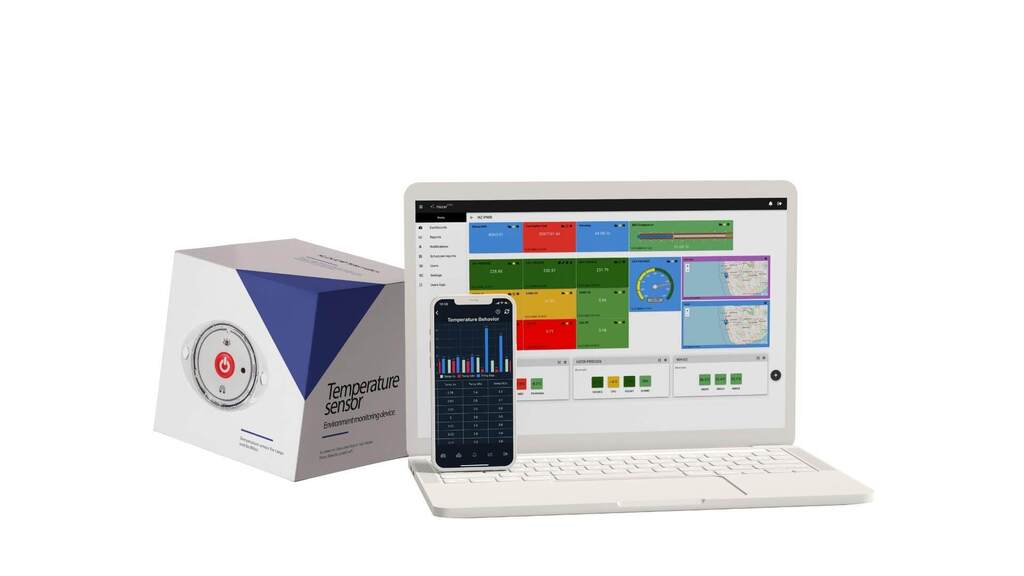
In most cases, the devices are wireless, so no installation is needed. A user only places a sensor in a specific location (container, fridge, etc.) and launches the app. In all other cases, KLOUDIP technicians travel to the site and install the devices. But even the most complicated works take no more than 6 hours (for example, when installing a liquid level sensor in a stationary fuel tank).
Out-of-the-box also goes 24/7 support, so in the case of an emergency – be it a hardware or software issue – KLOUDIP resolves it fast.
HAZER Specific IoT solutions
Here’s a quick overview of out-of-the-box IoT solutions available to users now.
Temperature monitoring

Storage and transportation environment monitoring is the most popular IoT implementation example globally. Thanks to it, we get frozen products, FMCG, pharmaceuticals, and other heat-sensitive goods unspoiled across the globe. HAZER Specific Temperature Monitoring includes the following components.
Hardware
BLE temperature and humidity sensors connected to HAZER via IoT gateway. You can fix the devices with screws or even sticky tape to any vertical or horizontal surface, so the installation takes minutes.
Software
HAZER IoT platform:
- IoT Dashboard. HAZER displays physical temperature sensors as colored widgets showing sensor values. KLOUDIP assigns a color to each temperature range specified by the client (e.g., “green”=“normal;” “red”=“critical”) – when temperature changes, the widgets also change colors.
- Alerts and notifications for temperature variations via SMS, email, HAZER mobile app, and web push notifications.
- Pre-set reports on transportation environment.
All that work on regular laptops and smartphones.
See how DHL uses HAZER-based temperature monitoring solution by KLOUDIP.
Energy management

Using KLOUD Energy means watching electricity meters in all your facilities on one screen, anytime. Moreover, KLOUD Energy helps identify the most energy-consuming appliances & peak electricity demand periods and monitor power infrastructure status. The solution includes the following components.
Hardware
Smart energy meters. The devices capture the data on electricity consumed by lighting, stationary appliances – like HVACs – and electronic devices connected to every socket in your building.
We can also connect your building to HAZER via OEM energy management hardware if it can be connected to the internet.
Software
HAZER IoT platform:
- IoT Dashboard. HAZER displays physical electricity counters as colored widgets. KLOUDIP can set energy consumption limits for each particular facility and configure the widgets to change colors if the limit is exceeded
- Insights dashboards show summarized data updated in real-time, for example, hourly or weekly energy consumption and peak electricity demand periods.
- Pre-set reports on energy consumption and cost history.
Annually, small-to-medium businesses consume 15,000 – 50,000 kWh of energy. In action, KLOUD Energy allows cutting the figure by at least 20%. Learn more about energy efficiency in our latest article.
Stationary fuel tank monitoring

Filling stations use ground and underground tanks to store fuel and supply it to vehicles. If such a tank eventually runs out of fuel, it may paralyze the work of a filling station. It may happen due to a leak, theft, or manual measurement error.
Ordering a tanker truck to refill it proactively will cost you a fortune. But there’s a solution that will show you the fuel level in the tank on your laptop or smartphone.
Hardware
Wireless fuel level sensors send data to HAZER via an IoT gateway.
Software
HAZER IoT platform:
- IoT Dashboard. HAZER displays physical fuel level sensors as line gauge widgets. These widgets perfectly illustrate the fuel levels in one or multiple tanks.
- Alerts and notifications for theft and leak detection or low fuel level.
- The map shows which fuel tanks demand refilling and allows planning fuel logistics.
- Insights dashboards and pre-set reports provide analytics on how much fuel gets in and out of your tanks daily, weekly and monthly. Based on it, you can plan fuel supply and tank refillings.
To sum it up, may your tanks always be full. And HAZER will assist you in this.
Stationary water tanks

These tanks supply water to your apartment or the whole apartment complex, are used for cooling during production, and ensure fire suppressing or agricultural irrigation. Imagine how many problems will arise if these tanks remain empty.
This solution works like the one for stationary fuel tanks described above, so we’ll make the long story short. It comprises:
- Wireless liquid level sensors send data to HAZER via the IoT gateway.
- HAZER IoT interface displays liquid level widgets, the map shows which tanks to refill, leak and low-level notifications instantly alert you, and water consumption reports provide dynamically updated analytics.
Machine hour monitoring

Machine hours show how much time your equipment and machinery perform, enabling smarter maintenance planning and cost analysis. Moreover, it shows when the equipment was turned on/off to detect off-hours operation and prevent its use for personal gain. Plus, by knowing the exact operating time, you can control fuel consumption in heavy and construction machinery to prevent thefts.
Luckily, you don’t need to be on-site to check if the equipment works efficiently. HAZER will also help here.
Hardware
Machine hour counters connected to HAZER via GPS trackers.
Software
HAZER IoT platform:
- IoT Dashboard. HAZER displays physical counters as colored widgets. You can group these widgets by production sites to check how machinery performs at different locations.
- Alerts and notifications for downtimes and off-hour operations.
- The map allows for checking where the machinery needs maintenance, becomes too cost-intensive, or cuts off.
- Insights dashboards and pre-set reports provide performance analytics and allow comparing the cost of running different machines or checking actual running time vs. scheduled.
The solution allows monitoring machine hours in heavy vehicles, machinery, and equipment to ensure the most cost-effective utilization of your assets.
Patrol guard control

HAZER enables remote monitoring of vehicles and people. In the latter case, it helps ensure that guards didn’t miss a checkpoint when patrolling an area. Here’s how it happens.
Hardware
Rugged GPS-enabled handheld devices with embedded RFID/NFC/QR readers. The checkpoints are equipped with RFID/NFC tags or QR codes. When a guard visits the point, he scans a code or reads a tag, sending the event to HAZER.
Software
HAZER IoT platform registers checkpoint visits, sends instant alerts if a guard skipped a point, and generates detailed reports on security personnel performance.
By the way, the same technology underlies our HAZER-based nurse response control system.
Essential fleet management

On their websites, most fleet management service providers advertise driving style monitoring, video telematics, fuel management, and other advanced features to explain why their systems are so expensive.
On the other hand, most fleet managers are ok with essential features at reasonable prices. That’s what KLOUDIP offers with HAZER-based fleet management.
Hardware
Simple GPS tracker.
Software
HAZER IoT platform. Its fleet management interface comprises the most widely used features of any fleet management system:
- Real-time location detection, vehicle tracks, and the option to follow a particular vehicle on the map.
- Trip details, including mileage, maximum and average speed.
- Sensor monitoring, if any are installed in the vehicle.
- Reports featuring trip history and details.
By narrowing the system down to fleet management essentials, KLOUDIP made the software simple and the most inexpensive in the market.
*Check out other ways to minimize fuel consumption in your vehicles.
Vehicle fuel management
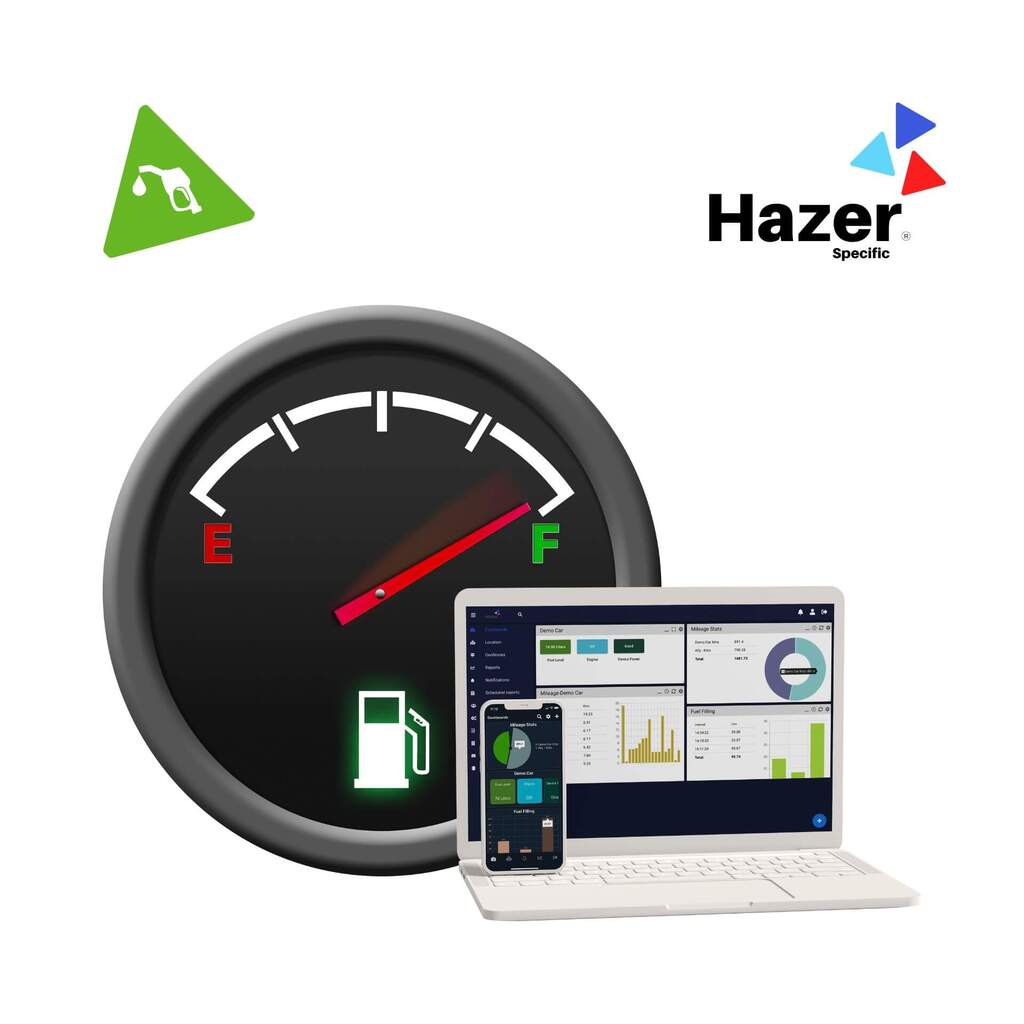
Fuel is the most significant fleet expense. Fuel monitoring is one of the advanced fleet management features and the most popular one. Sometimes, fuel is the only thing a fleet manager needs to control to cut operational costs.
That’s why KLOUDIP packed the solution into a separate “box.” The solution comprises:
Hardware
The fuel level sensor sends data to FiOS via the GPS tracker.
Software
HAZER IoT platform:
- IoT Dashboard. HAZER displays physical fuel level sensors as line gauge widgets. These widgets perfectly illustrate the fuel levels in each vehicle of your fleet. You can group the widgets by a garage, fleet manager, vehicle type, and other parameters, making fuel monitoring more convenient.
- Alerts and notifications for fillings, thefts, or low fuel levels.
- The map shows where fillings or thefts happen.
- Insights dashboards and pre-set reports provide analytics on how much fuel gets in and out of your tanks daily, weekly and monthly.
That’s probably, the best way to track fuel level and consumption in any moving assets, in real-time, and with maximum precision.
Just to make sure you didn’t miss it. In all the cases above, you don’t need any special tablets or industrial screens but a laptop or smartphone. And that’s just a few IoT solutions that KLOUDIP assembled based on their experience and customer requests. HAZER is universal – let us know your task and get a cost-effective turnkey solution tomorrow.




